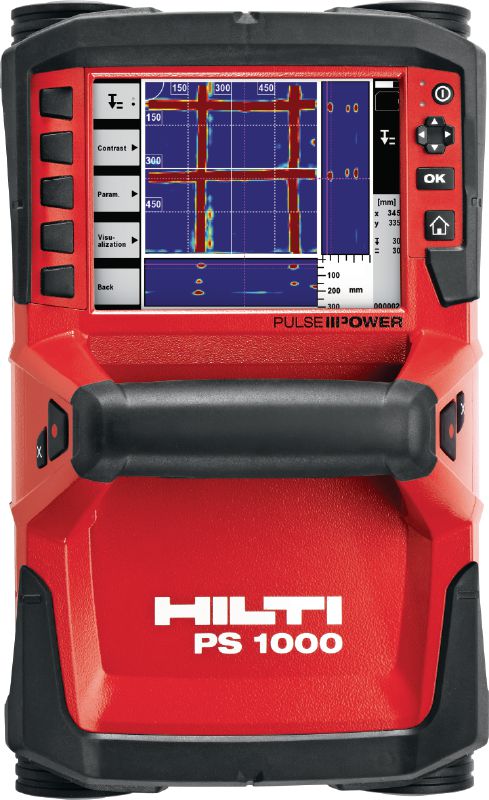Concrete Scanning: A Crucial Step Towards Making Sure Architectural Integrity and Security
In the world of building and construction and framework upkeep, the significance of concrete scanning can not be overemphasized. This meticulous process holds the crucial to introducing prospective hazards concealed under the surface area of apparently strong structures. By employing sophisticated innovation and methodologies, concrete scanning functions as a critical device in ensuring that the stability and safety and security of structures and bridges are maintained to the highest criteria. Nonetheless, beyond its surface-level effects, the duty of concrete scanning extends far deeper than meets the eye.
Significance of Concrete Scanning
Concrete scanning plays an essential role in guaranteeing the architectural integrity and security of structures and infrastructure tasks. By using innovative modern technologies such as ground-penetrating radar (GPR) and electromagnetic induction, specialists can non-destructively inspect concrete frameworks to identify potential defects, gaps, ingrained things, and reinforcement design. This process makes it possible for early discovery of anomalies that can compromise the security of a structure, protecting against pricey problems and making certain the safety and security of occupants.
Prior to drilling, reducing, or coring right into concrete, scanning assists identify the specific places of rebar, post-tension cords, and various other embedded aspects, reducing the threat of unintended hits that might lead to architectural weak points. Furthermore, concrete scanning aids in high quality control by verifying the thickness of concrete covers and detecting any kind of discrepancies that might influence the overall resilience of the structure.
Innovation for Concrete Examination

Advantages of Very Early Discovery
Timely detection of architectural concerns can considerably mitigate dangers and ensure the longevity of building tasks. By determining possible troubles early on in the construction procedure, stakeholders can take proactive steps to address issues prior to they rise right into larger and more pricey troubles. Among the key advantages of early discovery is the avoidance of architectural failures, which can present severe safety and security hazards and lead to project hold-ups and economic losses.
In addition, very early discovery enables timely repair work and maintenance, which can help expand the lifespan of the framework. By dealing with issues without delay, building teams can stay clear of costly repairs or even the demand for early substitute of structural components. This proactive method not only conserves money and time but also boosts the total safety and security and longevity of the building project.
In addition, early detection can enhance project preparation and decision-making by supplying stakeholders with important insights into the problem of the structure. Equipped with this info, job managers can make enlightened selections regarding construction timelines, methods, and products, bring about much more effective and efficient project outcomes.
Making Certain Architectural Stability
Making certain the architectural security of a construction task is vital to its safety and security and long life. Concrete scanning plays an essential duty in making certain structural stability by identifying prospective problems such as voids, go to website delamination, or support deterioration that can jeopardize the honesty of the framework over time.
By using advanced scanning technologies like ground-penetrating radar (GPR) and electro-magnetic induction, construction specialists can non-invasively inspect concrete frameworks to determine locations of issue underneath the surface. This positive technique enables the very early discovery of weaknesses or flaws, making it possible for timely repair services or support to avoid structural failings.
Normal concrete scanning throughout various building and construction stages and throughout the life process of a structure can help keep its stability, reduce dangers, and ensure the safety of passengers. By prioritizing architectural security via concrete scanning, construction tasks can enhance their resilience and durability, inevitably contributing to better security and longevity.

Avoiding Crucial Failures
To secure versus devastating occasions, precise surveillance and positive upkeep are necessary in averting important failures within structural structures. Detecting prospective concerns prior to they escalate is crucial to avoid structural failures. Applying routine examinations, such as concrete scanning, can expose surprise defects like voids, fractures, or rust that can compromise the honesty of a structure. By utilizing advanced scanning technologies like Ground Penetrating Radar (GPR) or Concrete X-ray, designers can non-destructively examine the problem of concrete and determine powerlessness that call for support or repair - RainierGPR Service Areas.

Conclusion
Finally, concrete scanning plays a crucial function in making certain structural stability and safety and security by utilizing sophisticated innovation for early discovery of potential issues. This positive strategy helps prevent vital failings and makes certain the stability of frameworks. It is vital to prioritize concrete assessment as a typical technique to protect the durability and safety and security of buildings and framework.
Concrete scanning plays an essential role in making sure the architectural honesty and safety and security of structures and facilities jobs. Furthermore, concrete scanning help in top quality control by validating the thickness of concrete covers and spotting any kind of inconsistencies that might influence the total toughness of the structure. Concrete scanning plays a vital duty in making certain architectural security by detecting possible concerns navigate here such as voids, delamination, or support corrosion that can compromise the honesty of the framework over time.

In final thought, concrete scanning plays an important function in ensuring structural integrity and safety and security by using advanced innovation for early detection of prospective concerns.